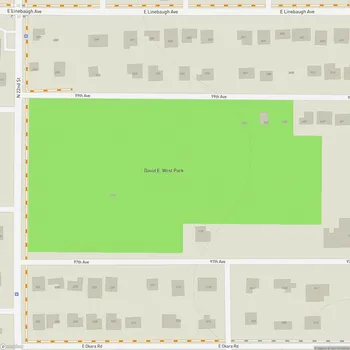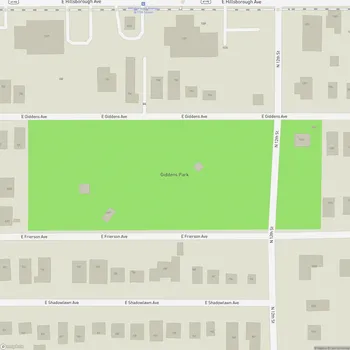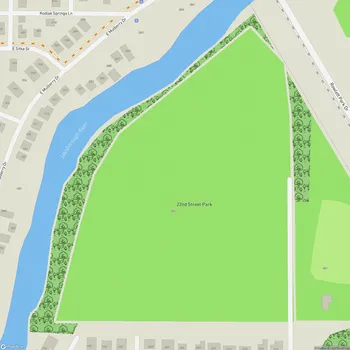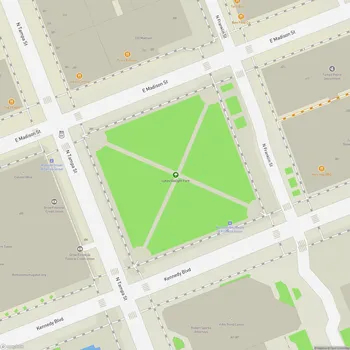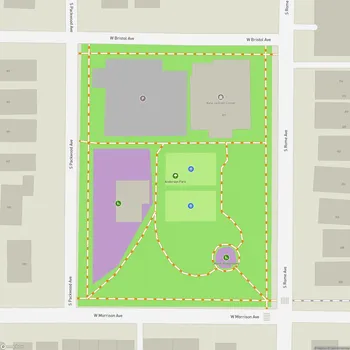Eureka Springs Park
Interactive Park Map
About Eureka Springs Park
A Garden with History
Back in 1938, an adventurous botanist named Albert Greenburg established what we now know as Eureka Springs Park. It wasn't just any garden - Greenburg created a botanical sanctuary for rare and unusual tropical plants. He also pioneered Florida's tropical fish farming industry right here near the springs. In a generous move, he donated the entire 31-acre property to Hillsborough County in 1967, making it the county park system's only botanical garden.
Botanical Wonderland
Wander through this green oasis and you'll see an impressive variety of plant life. The park houses the largest publicly owned collection of ferns in Florida - pretty impressive for a county park! A 1,700-foot boardwalk meanders through a lush floodplain forest, where maples, cypresses, and tupelo trees create a cooling canopy overhead.
There's something blooming year-round here. The rose garden with its elegant pergola offers fragrant beauty, while the orchid room showcases these delicate showstoppers. Around the grounds, you'll come across eye-catching displays of bromeliads, heliconias, and flowering trees that change with the seasons.
One of our favorite spots is the greenhouse, home to exotic plants and a charming small pond where goldfish dart about. We appreciate how many plants throughout the park have identifying labels - it's like a living classroom for anyone curious about plant species.
Natural Habitat
While the natural springs that gave the park its name now flow less vigorously (thanks to the Tampa Bypass Canal construction changing the local hydrology), the park still maintains its botanical charm and tranquil atmosphere.
The wildlife here adds another dimension to your visit. Turtles sun themselves near the water, birds call from the canopy, and butterflies and dragonflies dart through clearings. Keep your eyes peeled for woodpeckers, egrets, cardinals, and if you're lucky, a hawk soaring overhead. A small spring-fed creek winds through the property, providing a peaceful soundtrack to your explorations.
Learning in Nature
Curious minds will appreciate the educational aspects of Eureka Springs. The greenhouse opens during specific hours and offers fascinating insights into the park's horticultural efforts.
The trails themselves serve as natural classrooms, with opportunities for birdwatching and wildlife observation around every bend. If you have questions, the park staff are typically knowledgeable and happy to share information about the park's history and plant collections.
What to Expect
If you're planning a casual visit or looking for an event space, Eureka Springs has you covered. Picnic areas with tables are scattered throughout, and charcoal grills are available if you're in the mood for a cookout. The reservable party pavilion is available for small weddings, birthday celebrations, or photo sessions.
Clean restrooms are conveniently located near the entrance, and you'll be glad to know the trails are wheelchair and stroller accessible. Parking is $2 per vehicle, which covers admission for everyone in your car.
Plan Your Visit
One of the best things about Eureka Springs is that you can enjoy it in just an hour or two. The shade from mature trees keeps the pathways surprisingly cool, making this a pleasant escape even during Florida's warmer months. Bringing your four-legged friend? The park is dog-friendly (leashes required), and there are even water bowls for pets near the entrance.
Though not enormous, this park packs a lot into its thoughtfully designed space. Its diverse plant collections and calm atmosphere make it a nice escape in Tampa when you want to experience nature without traveling far from the city.
All Features & Facilities
Nature & Wildlife
Water Features & Activities
Visitor Services
Food & Gathering
Photo Gallery
ParkMagnet Score
Good Park
Park Size
Opening Hours
Weather
Top Hotels Near Eureka Springs Park
Extended Stay America Premier Suites - Tampa - Fairgrounds - Casino
0.4 miles8940 E Sligh Ave, Tampa, FL 33610
Extended stay hotel featuring streamlined suites with full kitchens, terrace, gym and complimentary breakfast.
